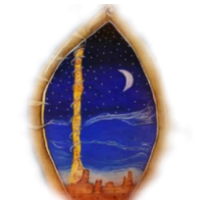Let us stand firmly upon the foundation of the heart, and let us understand that without heart we are but withered husks.
(Agni Yoga, Heart)
A few days before beginning this guide, my wife and I were driving to the grocery store. As I drove through the parking lot, I saw two women walking across our direction of travel. Naturally, I slowed down to allow them time to get to the sidewalk. As I slowly passed them, one of the women turned and gave me a dirty look, as if to say, “What’s your big hurry?”
I said to my wife, “What was that look for?” My wife had no idea, but we suddenly realized that this was the time to practice the when-which-how exercise. So, I felt that I needed understanding in this situation. After all, I could have given her an angry look in return, as if to say, “What are you staring at?”
As most readers of this guide may know, understanding is one of the six heart virtues of the when-which-how practice. The others are appreciation, compassion, forgiveness, humility, and valor. More on all these shortly.
So, why did I choose the virtue of understanding? Because I believed I needed to understand this woman’s position. I needed to put myself in her shoes (maybe literally). Maybe from her perspective I should have stopped my car until she and her friend got safely past us, instead of merely slowing down. Perhaps this person has issues relating to being a victim, low self-esteem, or prejudice. In this particular instance, I did not have that information. The point is not for me to psychoanalyze her, but merely to understand that these could be possibilities and that I should not condemn this person because of “that look.”
My wife agreed. We basically let it go through forgiveness, another heart virtue. Consequently, in this incident we agreed to use understanding and forgiveness. You may have noticed however, that we did not transmit any virtues to the woman in question. This is true. It seems as if we were so self-centered in our own reaction to her that we never even thought about sending her energy.
I did not realize this until several hours later and I was rather stunned that I had overlooked what, at that point in time, appeared so obvious. Now here is where I believe the true power of the when-which-how practice comes into play. This is the quantum physics part. Because we are dealing with entanglement (this woman and ourselves), a field (the emotional grid), and non-locality (non-spacetime), I connected with her at that moment of realization and sent her understanding and forgiveness.
Granted, this may appear to be a very trivial event, but many of these ordinary, mundane, and apparently innocuous encounters in our daily lives are all grist for the mill of the when-which-how practice. It may not be exciting, or dramatic, or glamorous, but this is the level of practice. Naturally, some of our encounters will be more demanding than others. Some will be real points of crisis, but they all require attention and as described in “Living from the Heart,” they are all approached with the following considerations as to:
• when you apply the heart virtues (or any subset therein) to a particular life situation;
• which one(s) you apply; and
• how you express the virtues into that situation.
Thus, our everyday lives are the content and the context of our practice. We are not going to a meditation retreat. We will not withdraw from the world. The monastery is not the place of our practice (although it could be). We work within the field of human living. We work within the temple of human events and the relationships that give them birth.
Summing up our when-which-how story, this particular event prompted us to make a decision that this was an instance when we could engage the when-which-how practice. This is the when stage. We next agreed on which of the six virtues to apply to this encounter. This is the which stage. Finally, we decided on how to apply the two virtues we chose. This is the how stage.
Explaining it like this may appear simplistic, but I want to show how straightforward this process can be. But as we shall learn, simplicity does not mean there is a lack of depth to emotional self-mastery. As we gain experience in the practice, we will increase our skill and artistry in the when, the which, and the how of our encounters with life’s events and situations. At deeper levels, we may even wish to explore the “why” of our emotional patterns. Each of us can choose the level of work we feel comfortable with. The most important thing is to stay alert to any situation in which we can apply the when-which-how practice. In fact, the ability to remain present amid the routine of daily living is vital key to all practice. More on this later.


